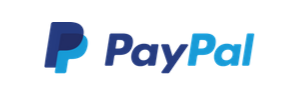
Click on any company logo below to read the story of how the company got their first users from scratch.
Company List
GitHub
Strategy: Word-of-mouth and Open Profiles
When GitHub launched in April 2008, the platform had already started a beta program for early users. They gained around 6,000 users by the time they officially launched. The early strategy revolved around inviting their developer friends to use the open platform. New users could easily share their code on GitHub with a single link. This increased the traffic to the GitHub website, as others wanted to check out the code. When people visited the code pages, they could sign up for the beta program on GitHub. This then allowed them to also publish code and share it with their friends. The strategy paid off as GitHub was able to get around 6,000 new users in the few months their beta program was live.

Intercom
Strategy: Cold email marketing
Intercom’s founder Des realized the importance of being able to communicate with your users early on. During the development of Intercom, several of the people around him tweeted about what Des and his team were working on, and about how they excited they were for the new product. The very early users for Intercom came from Des reaching out to potential users by email. He would send 100 cold emails to potential users, look at how well those emails worked and what kind of replies he’d get, and turn that knowledge into better emails the next day. He sent every single one of those 100 daily emails by hand to understand their potential customers. After the initial success through this outreach campaign, Des hosted webinars explaining Intercom with the main goal of getting every attendee to sign up for Intercom. He would stay up until 6am San Francisco time to host webinars for people in Australia, New Zealand and Asia to reach his potential users at the right time.

Apple
Strategy: Presenting their first product at local events
As Apple just started out, Steve Jobs and Steve Wozniak had to look for early customers and ended up presenting their printed circuit board (which would later be named the Apple I) at the Homebrew Computer Club. They bumped into Paul Teller, who owned the chain Byte Shop, and was interested in buying 50 machines running on the circuit board for $500 each (a total of $110,000 in today’s currency for all 50 machines). As both Steves had little money to buy these parts themselves, Jobs contacted a large electronic manufacturer and asked for a NET30 (pay 30 days after delivery) payment contract to get the required resources. They assembled the 50 circuit boards within 30 days, received payment from Paul Teller and managed to pay their agreement with the manufacturer.

Zoom
Strategy: Offline advertising through billboards
When Zoom launched in 2013, they needed to figure out a way to enter a saturated market with a product that “worked much simpler than other available products”. And they needed to reach their target audience in the right way at the right time and at the right location. Eric, Zoom’s founder, decided he would start advertising by renting a billboard on Route 101 in the center of San Francisco. The billboard contained the Zoom domain name and a single sentence “Video Conferencing That Doesn’t Suck”. People ended up going to Zoom.us because of the billboard and signed up as early adaptors to use the product. These early adaptors were satisfied with how Zoom worked and ended up telling people around them about Zoom.

Strategy: Personally inviting early users & Word-of-mouth
The Facebook story is pretty well-known, and there’s a scene in The Social Network where they explain what happened. When Facebook launched, it was just limited to Harvard. Mark Zuckerberg and Eduardo Saverin started with inviting their own friends, along with inviting the members of The Phoenix, a famous fraternity at Harvard that Eduardo recently joined. Friends soon started telling other friends about “The Facebook” and it spread around the Harvard campus. It was also featured in the Harvard Crimson, the local newspaper for Harvard students. In early February 2004, Facebook launched for Harvard students. Within a month, almost half of the attending students signed up for Facebook. In March, the website started their expansion planning, starting with Stanford, Columbia and Yale.

Strategy: Word-of-mouth
When Twitter launched, the team was working on a podcasting company. Twitter was sort of a side project by Jack Dorsey. The now-famous social media platform started out as a simple status update; you could text what you were up to and it would change your status – since texts were limited to 140 characters, this is where the previous 140 character limit originates – and it would share your status with your friends. The initial team of the podcasting company started using it internally and quickly other people joined through them. When visiting parties in Silicon Valley, the team would talk about Twitter and they got new sign-ups for the platform. Soon word-of-mouth resulted in dozens of sign-ups a day, as it was a great way to keep track of what your friends were doing.

AirBNB
Strategy: PR
The AirBNB story starts even before officially launching AirbedandBreakfast (the early version of AirBNB). Being short on rent, founders Brian, Nathan and Joe decided to rent out three airbeds in their apartment. There was a designer conference coming up in San Francisco and all the hotels were fully booked. They figured out there was a demand for a place to stay and they could supply it. They quickly turned to a PR campaign that started by emailing local designer blogs about the three available spots. Some websites covered their story, which quickly turned into other blogs picking up their story. They ended up renting out the three airbeds rather quickly. After their initial success, they realized there might be more demand around the country, so they started looking for other conferences and locals that wanted to rent out their apartment. Funny enough, early listings required people to actually put an airbed in their apartment, instead of providing a regular bed. This was quickly set aside and turned the idea into the unicorn that we know today.

Dropbox
Strategy: Video marketing
Though many people know how Dropbox got their first tens of thousands of users, a lesser known – but similar – story happened when they were just starting out. Dropbox started with just a beta waiting list. People could sign up through a simple landing page. To drive traffic to the landing page, Dropbox’ founders created a simple video about how Dropbox worked and posted it to HackerNews. Because HackerNews’ audience is very tech-savvy, it quickly drove a lot of traffic to the website. Within a short period of time, Dropbox got the irst 5,000 users on the waiting list. Later on, they repeated this strategy with another video, which helped to get tens of thousands of new users on their waiting list in just a week.

Slack
Strategy: Word-of-mouth & PR
While working on a multiplayer video game, the team built its own internal messaging system. As the video game wasn’t working out too well, the team decided to pivot their entire company and focus on building Slack. After closing down their company in 2012, the team built a prototype and launched by April 2013. During the first three months, they begged their friends at 10 different companies to start using Slack as a tool for team communications. Though some companies just started using Slack for smaller teams, it quickly grew out to be used company-wide. They used their initial users to test the product and to find bottlenecks within the software. Because Stewart Butterfield previously co-founded Flickr, he was already rather well-known in the tech scene. Once Slack was ready to launch, sites like TechCrunch, VentureBeat and other tech blogs. This led to quite some traction and resulted in 8,000 invitation requests on the first day. The next two weeks added another few thousand invitation requests, boosting the total requests to a whopping 15,000.

Tinder
Strategy: Personally inviting new users & Word-of-mouth
Tinder entered the market to try and engage college students in online dating. So they started thinking about what a dating marketplace needs: supply and demand. And usually, the best way for a lot of people to sign up is to make sure you have enough women on the platform. One of the co-founders of Tinder decided to attend the meetings of different chapters of their sorority and get the women to install Tinder during the meetings. Having this early supply, it was rather easy to go to the fraternities around the area and show them that several women had already signed up. A lot of people attending university are in a fraternity or sorority, but there’s something else a lot of college students do: partying. And, according to the founders, the best way to find these college students was by throwing college parties. The parties had no entry fee, all you had to do was show the Tinder app on your smartphone and you were free to enter the party. This launch strategy is similar to that of Facebook’s. Once they got initial users to sign up for Tinder through a single college party, they realized they could extend this method by going to other campuses and throw parties there as well. This quickly spread the word of Tinder and attracted early users.

Stripe
Strategy: Word-of-mouth & PR
While on a hacking trip in Argentina, brothers Patrick and John created the first version of what would soon be Stripe. Users could sign up but a lot of technical work behind the scenes was done manually. Two of their friends signed up as early users. Once a new user signed up, they would create a new account at a financial firm where one of their friends worked. The first version of Stripe didn’t have a way to transfer the incoming payments to their users’ bank accounts. Slowly but surely they learned about new problems and find the right solutions. The brothers continued on this path for the next few months. Launching an online payment processor is hard, especially when you’re new to the market. Where most founders will ask potential users to try their product and send their link, Patrick and John realized there was a better way: whenever someone showed interest in Stripe, they would sign them up right there. Stripe enrolled in Y Combinator and soon several of the other companies in Y Combinator started using Stripe as their payment processor. At this point, most of the work needed to run Stripe was still done manually but Patrick and John did a great job at making it look like everything was automated. Because they manually arranged several key factors behind the scenes, they learned how to, later on, automate these factors to create a better product. While working on Stripe during Y Combinator, the Y Combinator blog also published a post about Stripe, which helped spread the word of this new payment solution.

Groupon
Strategy: Flyers
The founder of Groupon, Andrew Mason, eventually pivoted from a different product he was working on, a political petition platform, as his main investor believed he needed to make money. Andrew thought of an idea: offering a one-time 50% off at the pizza joint located in the same building. He printed a few flyers and left them around the office building he was working at. Users could sign up through the link on the flyer, and soon the first group of Groupon users signed up to get a nice discount at the pizza joint. Based on the initial success, Andrew believed more similar deals would be interesting for others, and the website expanded into new markets within Chicago. Within a few months, it expanded to new cities.

Microsoft
Strategy: Leap of faith and cold calling
When Bill Gates attended Harvard, Paul Allen (the Microsoft co-founder) saw an announcement for the first personal computer, the “Micro Instrumentation and Telemetry Systems (MITS) Altair”. They quickly realized that a device like this needs great software to perform tasks. They called MITS to talk about a demonstration of their software – which in reality they hadn’t started creating yet as they didn’t own an Altair. Within 8 weeks, they developed a basic version of the software called Altair BASIC. As both Paul and Bill was visionaries in the world of computers, they believed a system like this should exist. With the upcoming personal computers, Paul and Bill decided to focus on solely creating software.

Firefox
Strategy: Sharing in existing community
When Firefox launched, they were launching it as a first milestone for the Mozilla project. They put the download link for their browser on an FTP site. Back in the day, FTP sites were like directories for downloadable files. During the first week of their launch, mozillaZine covered the launch of the new web browser, then still named “Phoenix”. Later that year, lots of other blogs were covering this new web browser, such as ComputerWorld.

Gumroad
Strategy: Cold email and virality
Gumroad has virality built into its platform. Every user that launches a new product on Gumroad automatically promotes the platform. But even when virality is a huge part of your product, you need to get your early users. The team behind Gumroad started with a simple but effective method: reaching out to as many potential early users by email. Cold emails, as long as they’re valuable, are still an effective way of attracting new users. By sending thousands of emails and personally reaching out to people, they steadily grew from an unknown company to a go-to marketplace for sellers and buyers of digital and physical goods.

Twitch
Strategy: Using their own product + word-of-mouth
Twitch is now the famous streaming platform, but when it just started out it was called Justin.Tv, named after its founder Justin Kan. Justin used the platform to stream his own life and called it “lifecasting”. People would tune into Justin streaming on his own channel and would ask how they could sign up to start their own channels. Justin.Tv quickly pivoted from just hosting his own channel to allowing users to create channels. This ultimately led to viral growth, as more people would join after being checking out their friends’ channels and start their own channel. Though “lifecasting” wasn’t very popular, Justin.tv got seed funded by Y Combinator and ended up pivoting into the world of game streaming. This led to exponential growth, as live streaming within the gaming world was only just getting popular.

Mixpanel
Strategy: Manual user onboarding
Mixpanel was officially launched on January 1st 2009 in a blog post by Suhail Doshi. The company got its early users by using Suhail’s network. A little before developing Mixpanel, he was working on creating social apps through Google’s Open Social and met a lot of like-minded developers. These developers were running their own websites or applications and were interested in getting more insights into their analytics. Suhail realized that most of these companies didn’t have the bandwidth or the resources to create their own analytics tools that were more comprehensive than you would get from tools such as Google Analytics. The first customer paid $150/month and Suhail acted as a consultant: the user would install a piece of code and Suhail would send him the reports manually.

DoorDash
Strategy: Local SEO
DoorDash quickly grew out to be a big player in the meal delivery space, but started as a small delivery company. The founders were aware that ordering food online was still hard back then as most restaurants didn’t have a dedicated delivery team. They designed a simple landing page with PDFs containing menus from local restaurants and added their own phone number to the PDFs. Since their domain name was pretty generic for their area (Palo Alto), they started showing up in Google results rather quickly and got their first customer. Because they were just a small team back then, they decided to do the deliveries themselves. This also allowed them to talk to their early users to see what they could improve within their system.

Strategy: Word of mouth
Instagram didn’t start out as Instagram but rather as Burbn, a location-based app to check in at bars. A bit like FourSquare, but a lot more picture focused. Kevin and Mike, the founders of Instagram, quickly realized most people didn’t really care about the check-ins but were mostly interested in the pictures people uploaded. This would be the core principle of the app and they rebranded it as Instagram. For Burbn, the early user growth came from Kevin attending a tech party in Silicon Valley. He told multiple people, including two investors, about his new app and they ended up installing it. Silicon Valley has a lot of early adopters and these first users quickly told their friends. Before Burbn pivoted to a photo sharing app, they already had 25,000 users. They invited all their Burbn users once they launched and the app gained more traction that day thanks to an interview with Kevin on TechCrunch; in the end around 25,000 users signed up for Instagram on its launch day.

Trello
Strategy: Presenting at a tech conference
Trello officially launched in 2011 at TechCrunch Disrupt and quickly gained traction at the event. The first users signed up for the platform and word-of-mouth helped Trello to get its first 500,000 users within a year. The main reason Trello was so quickly adopted is its easy to use product, but most importantly its freemium model. From the start, users could sign up for free and would be able to use Trello for free forever. Because TechCrunch Disrupt attendees are mostly early adopters looking for new products, it was a great way to get early feedback from their first users, who would later on share it with their friends because they loved the product.

WordPress
Strategy: Tapping into an existing userbase
Back in 2003, there weren’t many great options when you were trying to build a blog. b2/cafelog was a tool that could be used to create blogs but the developers decided to discontinue its development. Matt Mullenweg and Mike Little, WordPress’ founders and users of the b2/cafelog software, decided to develop their own version based on the discontinued software and added additional features. They reached out to the existing community about their new tool and it was received well by users who would no longer be able to use b2/cafelog. Because their users would share their own blogs, the word about WordPress quickly spread to others, who would sign up and create their own blog.

Alibaba
Strategy: Cold calling & demoing on location
Realizing that the internet would change the world of commerce, the founder of Alibaba, Jack Ma, decided he needed to fill the gap between offline and online. He gathered some of his college friends and quickly turned them into a high-functioning team that would build the Alibaba marketplace. The early users of Alibaba were all signed up manually by visiting manufacturers after reaching out to them by phone. The team would teach them how to add products to Alibaba and how the platform worked. This lead to early stage customer feedback, as they’d run into problems when demonstrating the system, but also from early customers who’d find bugs or had a hard time understanding how the platform worked.

ProductHunt
Strategy: Word of mouth & Newsletters
Ryan Hoover, ProductHunt’s founder, started out by creating a newsletter that featured the newest tech products he had discovered. After creating the newsletter, he reached out to his own network to see if people were interested in receiving a list of new products to discover. He quickly turned it into an engaging newsletter where others could also share their links to new tech products to be included in the list. After seeing this initial success, Ryan realized there was a way to turn this into an online community that went beyond a list of products by email. After learning how to code with Ruby on Rails, Ryan turned his newsletter subscribers into a community that listed the best new tech products, books, courses and more.

Skype
Strategy: Word of mouth & PR
Skype started out with a beta launch. After building the peer-to-peer file sharing program Kazaa for a few years and selling it in 2002, the founders realized VOIP and peer-to-peer would be a great combination. The two founders, Niklas and Janus, gathered some of the developers of Kazaa and started working on Skype. Its beta version was launched on the 29th of August in 2003 and the team sent links to their website to friends and bloggers. This generated the early sign ups but most importantly resulted in a lot of PR. About a month later, the New York Times published a full page on Skype and how it was going to transform the way we call people.

Hotmail
Strategy: PR & Built-in virality
Hotmail officially launched on the 4th of July in 1996, after they received funding on February 14th of the same year. The founders of Hotmail hired a PR firm to launch a massive PR campaign. They talked to several journalists about their product and this helped spread the word during the first few weeks after launch. Another great boost for their user growth was a small line that said “Get Your Free Email at Hotmail” whenever someone sent an email. In the end, this was like adding kerosine to a small fire, as the company grew to 100,000 users in just 3 months.

Strategy: Word of mouth
Pinterest got its first users simply by word of mouth. After Ben finished developing the first version of Pinterest, he decided to tell his friends and family about it. Some of his family members soon signed up and spread the word to get more users to the website. Early on, Pinterest was simply an invitation-only platform. You could only sign up if you were personally invited by someone else. To further spread awareness, Ben decided to start looking for local bloggers to write about Pinterest and to participate on the platform. Hosting special events called “Pinterest bloggers”, he would invite local bloggers and talk about Pinterest. Another famous story about the early days of Pinterest is Ben going around local stores to open up Pinterest on the computers and iPads. He’d open up Safari, visit Pinterest.com and would leave the website on the screen.

Strategy: Word of mouth
When Whatsapp launched, the founding team focused on getting their friends, family and ex-colleagues to start using the message app. One of the founders, Jan Koum, used to work at Yahoo and told his previous colleagues about the app. They then got their initial users to refer more friends to the message app, allowing them to slowly grow its user base during the first couple of weeks after launching. This initial user referral growth also became the future growth strategy for Whatsapp. Users could invite the people on their contact list with a text message to join them on Whatsapp.

Strategy: Word of mouth
Reddit started when the co-founders were enrolled in Y Combinator. At the time, Digg was one of the biggest websites on the internet, but there was a lot of controversy around the site. The founders of Reddit believed there was room for a better platform. The first users of Reddit came through Y Combinator and were all active in the tech scene. The founders told others around them about the site and Paul Graham shared the site with his network. To make the site look at least a bit active, the founders created new accounts themselves and would post new links on the site. This ‘Fake it till you make it’ strategy ended up paying off, as soon the founders no longer needed to create new accounts nor post their own links, as the site had enough active users to slowly become the new front page of the internet.

Amazon
Strategy: Word of mouth
Amazon may the biggest online US retailer right now but at the start they had to get the first order just like everybody else. After months of developing, the site finally launched with over a million books in its inventory. All the people involved in developing the first version of Amazon sent the link to the website to all of their friends and family. This turned into the first initial sales. One of the early employees invited a former colleague over to try the recently developed platform. His name was John Wainwright. He ended up making the first purchase on the website, which was a science book. The first order was placed on April 3, 1995. Years later, to celebrate the first order by John, Amazon named one of the building on their Seattle campus after John.

Paypal
Strategy: PR
Before PayPal became PayPal, there were two companies who would later merge: Confinity (Peter Thiel, Luke Nosek and Max Levchin) and X.com (Elon Musk). Confinity was a payment system that would mainly run on PALM systems (yes, it’s that old) and had an official launch party where Nokia Ventures sent several million dollars through Paypal on a palm pilot. About a dozen TV cameras and journalists were at the official launch of Paypal and this led to the initial users signing up for the service. About 9 months later, Confinity’s PayPal and X.com merged into Paypal.

Salesforce
Strategy: Inviting users within their network
While the Salesforce team was working on the early version of the platform, they’d often invite prospective customers over to their apartment to test the tool and get feedback. They listened to every bit of feedback to understand users’ concerns and preferences. Salesforce also hired a usability to company that ran users through the application to understand user behavior. Salesforce was the first CRM to be built online rather than just available by CD. Press jumped on the story and talked about how Salesforce was changing the world of sales. Early users were able to use Salesforce for free, which led to feedback that shaped the early versions of the product.

Zapier
Strategy: Looking for users on product forums
Zapier allows people with no knowledge about working with API’s, to connect API’s from their most used tools in order to automate important tasks and save time. Though Zapier is mostly automated today, most of the work was done manually by Wade Foster, Zapier’s CEO. Many online products had their own support forums on which users would ask for integrations with other tools. As most companies would add these integrations to their roadmap for 6 months from now, Wade was able to hop on a quick call with its early users to configure the integration instantly. He would reply to these forum posts explaining that his team was currently working on an integration and added a link to a landing page. Although the pages would only get around 10-15 visits, around 50% would sign up. These forum replies and landing pages also helped in getting traction from the companies they would integrate into their software, which resulted in the first companies signing up to officially launch a Zapier integration.



Share: